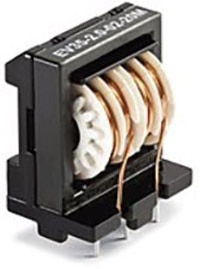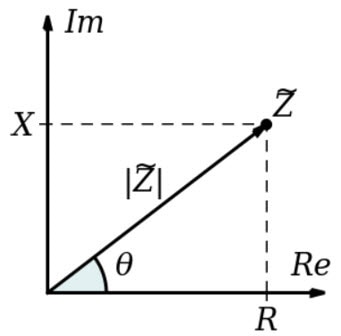Understanding Impedance
2024-05-13 | By Antonio Velasco
When taking circuits classes, a term that's used all too often that you may come across is impedance. It's a little bit tricky to understand at first, and in general, it can be extremely confusing to work with. As such, it's extremely important to understand it as it is crucial for designing and analyzing circuits, especially when dealing with resistors, inductors, and capacitors. Impedance, often symbolized by Z, is a comprehensive term that describes how a circuit element restricts the flow of alternating current (AC). It’s a bit more complex than resistance, which applies to direct current (DC). Let's go over what it is and how it works!
Impedance of Components

Let's start with something basic: resistors! Its impedance is essentially its resistance, denoted as R. Resistors impede the flow of electric current in a predictable and consistent manner, and their impedance doesn't change with the frequency of the AC. As such, it's extremely simple for us to take the resistance and the impedance of a basic resistor.

Inductors are a little different. Inductors store energy in a magnetic field when current flows through them. The impedance of an inductor, called inductive reactance (XL), increases with the frequency of the AC. The formula for inductive reactance is XL = 2πfL, where f is the frequency and L is the inductance of the coil. Unlike resistors, inductors resist changes in current, and their impedance is more about opposition to change than direct opposition to flow.

Capacitors are also directly affected by AC. Capacitors, or caps, store energy in an electric field between their plates. The impedance of a capacitor, known as capacitive reactance (XC), decreases with an increase in frequency. The formula for capacitive reactance is XC = 1/(2πfC), where C is the capacitance. Capacitors oppose changes in voltage, which gives them a unique role in AC circuits.
Impedance as a Concept
When working in DC, it's easy to predict what the overall resistance of a circuit would be, even with these values. However, with AC, mainly because of the frequency, the resistance (or impedance) can be a bit difficult. Impedance in a circuit containing resistors, inductors, and capacitors is a combination of resistance (R) and reactance (either XL or XC). It’s important to understand that impedance is not just about magnitude; it also has a phase angle, because reactance can cause currents and voltages to be out of phase.

To calculate the total impedance in a circuit, we use the formula Z = √(R² + (XL - XC)²). This formula accounts for both the magnitude and the phase difference caused by the reactance.
A key aspect of impedance is its frequency dependence. In a resistor, impedance is constant regardless of frequency. However, in inductors and capacitors, the impedance changes with frequency. This characteristic is exploited in various applications like filters and oscillators.
In practical applications, understanding impedance is critical for tasks like matching the impedance of speakers to amplifiers in audio systems, designing filters in electronic circuits, and managing signal integrity in high-speed digital designs. When dealing with more complex circuits, the method of calculating impedance might change. For series circuits, impedances simply add up. However, for parallel circuits, the calculation is more involved and requires the use of reciprocal sums. Impedance matching is a crucial concept in electronics, especially in communication systems. It’s about ensuring that the impedance of a load (like an antenna) matches the impedance of the source (like a transmitter) to maximize power transfer and reduce reflections.
Overall, impedance in resistors, inductors, and capacitors is a foundational concept in electronics. It combines the straightforward resistance of resistors with the frequency-dependent reactance of inductors and capacitors. Understanding how these elements work together in AC circuits is vital for anyone looking to deepen their knowledge of electronics. Whether it’s for simple educational projects or complex commercial applications, grasping the concept of impedance paves the way for more effective and efficient electronic design.
Have questions or comments? Continue the conversation on TechForum, DigiKey's online community and technical resource.




